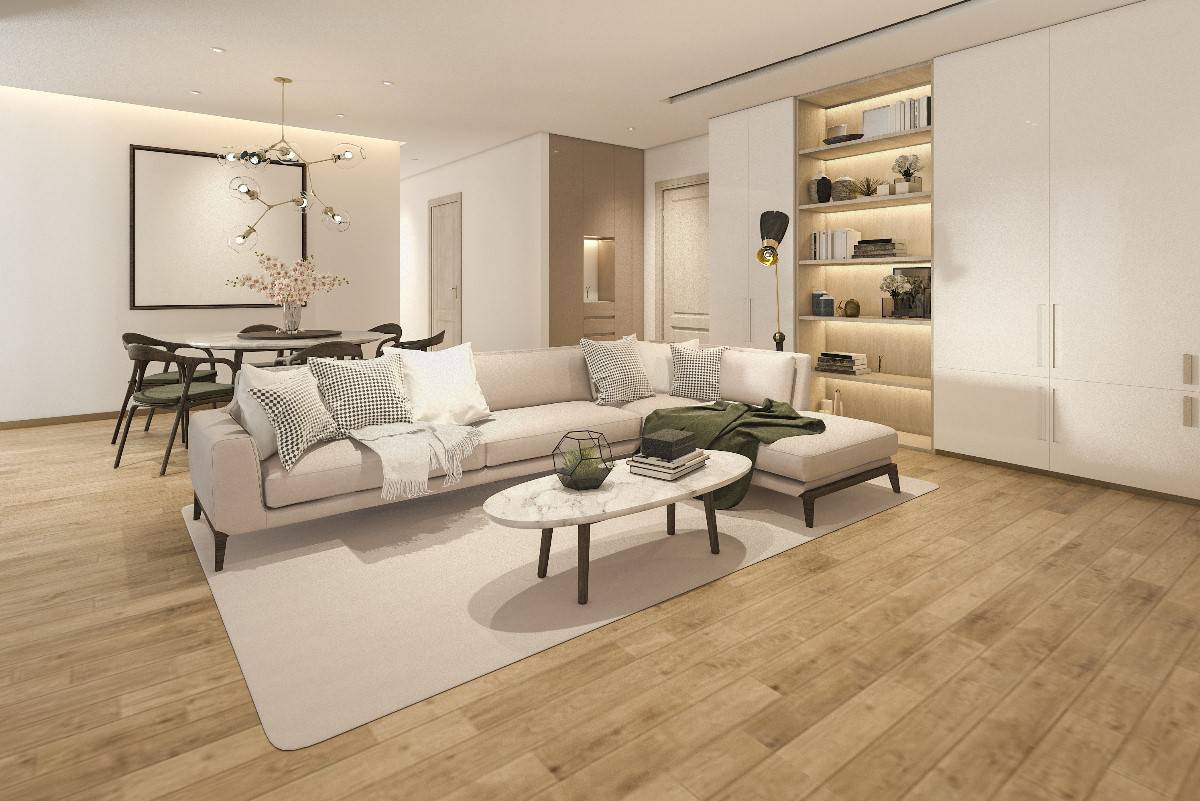
Traditional parquet flooring is mainly associated with the luxury of communist Poland. Nowadays we see a great return of the traditional parquet as a floor finishing element. Its durability and elegant look is influenced by the type of wood it is made of and the finish of its surface.
Parquet fits virtually every style of interior. The color and species of wood parquet should be chosen according to the style of a given room. Unfortunately, not every type of wooden parquet can be laid in any pattern.
Parquet is a cheaper floor finishing material than parquet boards, but it takes much longer to lay. Parquet can be up to 50 cm long and 15-22 mm thick.
Traditional parquet flooring is made from domestic wood species such as:
Domestic species are used for staves with a length of 30 cm. Staves 50 cm long are made of exotic wood. The most popular species of exotic trees used for staves are:
Staves should be 16-22 mm thick , but thinner staves of 10 mm are also used. It is worth knowing that the thicker the board is, the more times it can be scraped. Staves with a width of 3-15 cm can be found on sale.
Layered parquet elements are a very interesting solution available in stores. They are glued from two layers arranged in such a way that the grain arrangement crosses over them. The top layer of this parquet is usually made of:
The bottom layer is made of coniferous or deciduous wood.
Layered parquets are perfect for laying on underfloor heating, because they do not deform
When choosing a parquet for a modern interior, you should take into account the manufacturer’s recommendations. It is very important especially in case of parquet flooring installed over underfloor heating and in rooms with high humidity. Parquet with an outer layer made of hardwood is worth choosing for intensively used rooms. When choosing a “hard” parquet, you should be guided by the Brinell scale (BHN).
The species of wood should always be matched to the pattern on the floor. Not all species can be used to create any pattern. It can be laid only with those types of wood that do not change under the influence of room conditions such as humidity or temperature. Such woods are:
Herringbone and square pattern minimizes the effect of “working” wood. For the laying of such a pattern are best suited:
Hardwood parquet floors will not last long if they are laid on an unsuitable subfloor. The parquet floor also has a soundproofing function. This is very important in the case of acoustic parquet floors.
Parquet is a material that “works” all the time, but this can be minimized by an adequate subfloor. An underlay is best suited for this purpose:
Various types of adhesives can be used to glue parquet to the subfloor. The best ones are
Not all adhesives available in the market can be used for all types of wood, e.g. dispersion glue should not be used for gluing beech or exotic wood parquet.
Each wood floor requires proper protection, which will extend its durability and color. This will make it more resistant to dirt and scratches. Parquet can be protected by:
Recently very popular are water-based varnishes, which are not harmful to humans and animals. Thanks to varnishing you can obtain the following finishes:
Some of the varnishes require using a special primer. Before varnishing the floor surface must be:
In rooms with increased intensity of use it is recommended to apply 3 layers of varnish and additionally from time to time a refreshing varnish.
Waxing and oiling a parquet floor are very ecological methods of protecting it. Oils and waxes can be applied either hot or cold. Depending on the type of wood, 2-4 layers should be applied. Parquet protected in this way needs more frequent maintenance than varnished parquet.
Parquet flooring does not protect against staining or dirt and should therefore be additionally protected with, for instance, wax.
Parquet is a timeless interior finishing element that adds elegance to the room.